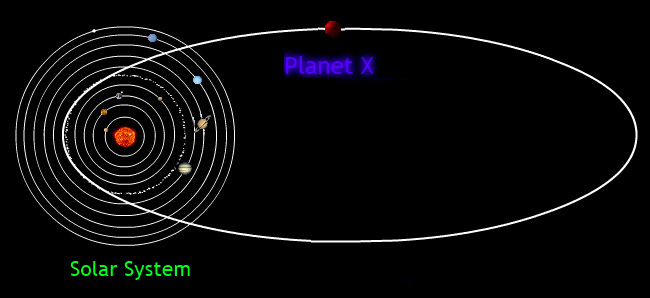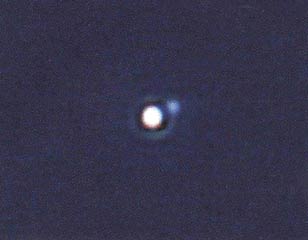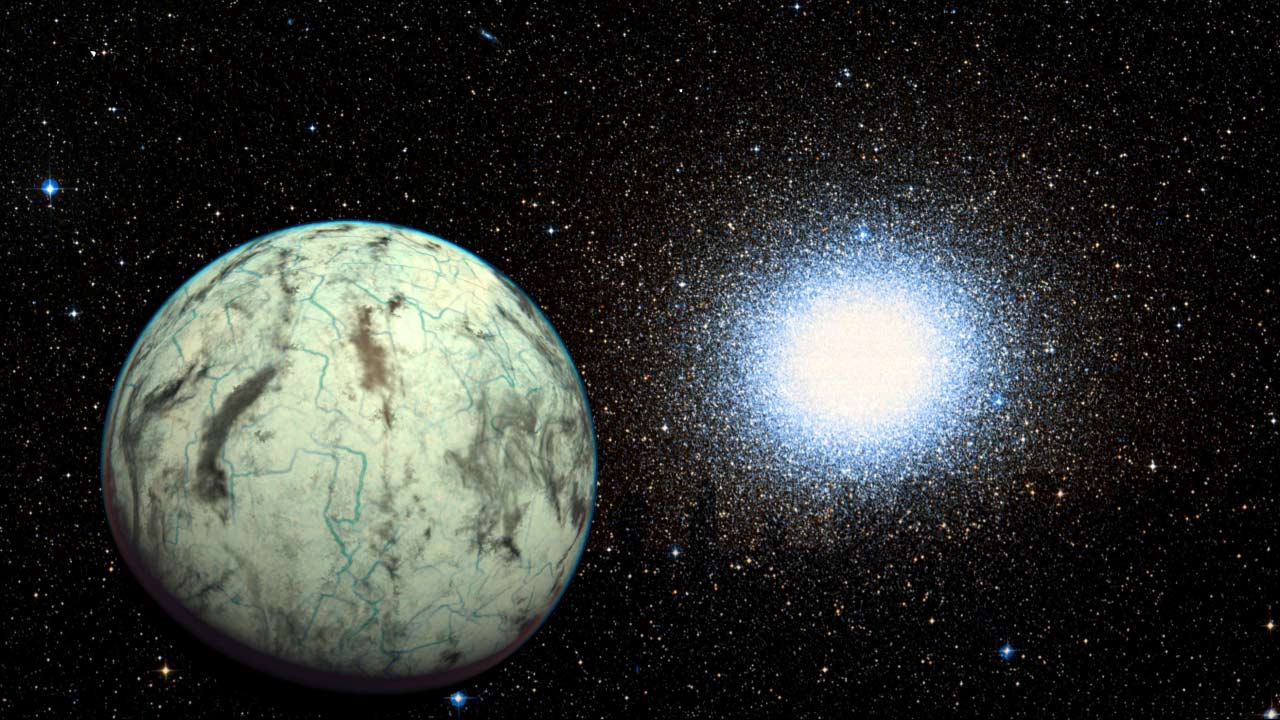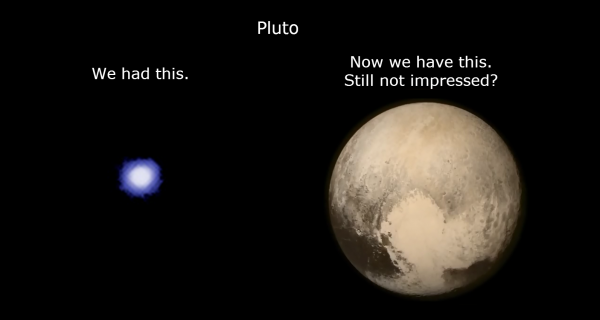Scientists claim there might be a ninth planet in the Solar System, the mysteriously named ‘Planet X’. If it’s true, it’ll be one of the biggest astronomic discoveries in decades – but that’s a big if… What exactly is ‘Planet X’, and does it really exist or not?
‘Planet X, or ‘Planet 9’ was discovered solely based on gravitational anomalies in dwarf planets and asteroids in the end of the Solar System. It was discovered by a team of astronomers from the California Institute of Technology, and not by just anyone. The principal scientists are Konstantin Batygin and Mike Brown, and you might recognize that latter name as the man that ‘killed’ Pluto by demoting its status to dwarf planet. And when these people announce a new planet, people listen…
Not ‘discovered’
It’s important to note that ‘Planet X’ hasn’t really been discovered yet. What Brown and Batygin have done is make a new gravitational model of the furthest reaches over the Solar System, by studying the orbits of 6 asteroids in the Kuiper Belt. They found that the orbits of these objects didn’t really fit into the current model of the Solar System though, and there had to be another large object that affected the gravity of the asteroids.
Basically the only explanation for these anomalies is another massive planet that’s really far away. So ‘Planet X’ hasn’t actually been ‘discovered’, but it’s really the only explanation for how objects at the end of the Solar System move around. The chance that this is just a coincidence is only 0,007%, according to the astronomers.
Wat is Planet X?
If the planet is real, it lies very far away. It orbits the sun every 15,000 years (as opposed to the 238 it takes Pluto), and has a mass of about 10 times the Earth. So how far away is it? The astronomers estimate the closest approach to the sun is around 200 and 600 AU (Astronomical Units, the distance between Earth and the Sun, i.e. Earth is 1 AU away from the Sun), but somewhere between 600 to even 1200 AU at the farthest, and if you think that’s a rather broad margin, just think that Pluto is at ‘only’ 39 AU.
It’s pretty useless to put something like that in metric numbers, but let’s try it anyway. Earth is 150 million kilometers away from the Sun, Pluto is at 5,9 billion kilometers, and Planet X would be somewhere between 30 and 120 billion kilometers from the center of the Solar System.
Maybe this model will visualize it a bit better. Also note where Voyager 1 is (at 133 AU), the furthest man made object in space which has been traveling for some 43 years now.
The long and complicated history of ‘Planet X’
You might’ve heard of the name ‘Planet X’ before, and you might recognize the news articles that state that it’s been discovered.
The idea of a ninth planet in the Solar System isn’t new. The term dates back to 1906, when Percival Lowell first proposed the existence of a planet after Uranus and Neptune.
Lowell used the orbits of existing planets to calculate that there were several anomalies in the orbits of the ice giants, Uranus and Neptune.
Pluto, the missing link
At the time, Pluto hadn’t been discovered yet, and when Pluto was officially discovered in 1930 it appeared to prove Lowell’s point.
But in the years after its discovery, it was found that Pluto was way too small for it to be the famous Planet X, and that it couldn’t account for the discrepancies in gravity on the larger planets. The search continued.
In the years since Pluto’s demotion to ‘dwarf planet’, many teams of astronomers have tried finding Planet X. A fair amount of scientific papers were published, but none were conclusive and just as many were found to be based on errors or miscalculations.
Disproved
Planet X was even officially ‘disproved’ by data from the Voyager 2 probe. After Voyager’s flyby of Neptune, the planet’s total mass was corrected by 0,5%, which meant that there couldn’t have been any disrepancies in its orbit caused by a larger planet. Similarly, the orbits of other deep-space-probes such as the Pioneers and Voyager 1 didn’t show any significant change in trajectory that could be accounted for by a planet – all leading astronomers to officially abandon the idea of a Planet X.
The disprove has not stopped certain scientists and astronomers from theorizing about the planet though. Every few years, new claims pop up about the existence of the planet – but with very little proof.
Quacks and hacks
It’s not just scientists that believe in the planet. There’s actually a massive collection of conspiracy and doomsday thinkers that believe ‘Nibiru‘, as they call it, will be the end of the world as we know it. Some have linked Planet X to the ancient Mayan prophecies of the end of the world on December 21, 2012, saying the planet will come in collission with Earth that day.
So why is it different this time?
You can see why scientists are skeptical about yet another claim to Planet X. But this time it’s a little different. Most of that difference lies with Brown and Batygin, who are big names in astronomic circles. Brown is one of the most renowned planetary scientists out there, so when he makes a claim, people listen.
Also, the model does explain many things, like the elliptical orbits of Kuiper Belt objects which have always eluded astronomers, and which could not be explained by the position and size of Pluto.
How can we spot exoplanets, but not one in our own backyard?
It’s fair to ask how we’re able to spot teeny tiny exoplanets billions of lightyears away, but we still can’t find or confirm a planet in our own Solar System.
The answer to that question lies in the way astronomers detect exoplanets (planets from outside the Solar System). This happens in a different way than with the discovery of Planet X.
Telescopes, how do they work?
Large space telescopes like Kepler don’t look for the planets themselves, but for distant stars. When a planet moves in front of a star, that’s what the telescope sees: A tiny yellow dot with an even tinier black dot moving in front of it.
As opposed to this:
Planet X wasn’t discovered this way, obviously. No space telescope hovers beyond Planet X to look inward into the Solar System.
But because Planet X is so far away, it’s impossible to spot it accidentally using Earth telescopes. Even Pluto was just this blurry dot on the map until we sent New Horizons to it to take pictures:
If that’s Pluto at 39 AU, imagine what Planet X’ 600 AU would look like – and then try finding that in the massive vastness of emtpy space. It’ll come as no surprise that Brown is unsure if they can ever really spot the planet – especially when its current place in orbit is unknown.
Proving Planet X’ existence
Planet X isn’t the only planet that’s been discovered by mathematical calculations. While the first 7 planets from the Sun where found with telescopes, Neptune was only discovered in 1845 by calculating other planets’ orbits. It wasn’t until much later that we had the ability to develop strong enough telescopes to actually spot the planets.
The next step for Brown’s team is to ‘prove’ Planet X. The paper was published in ‘The Astronomy Journal’ and was peer reviewed, so at least the numbers are right.
Using a Very Large Telescope
Brown and Batygin have booked some time on the Subaru Telescope on Hawaii, the world’s only telescope that’s capable of finding the planet. But even with it, Brown predicts it’s going to take at least 5 years to locate it.
It might be a while before a discovery of this kind is confirmed, and it’s not the first time Planet X has been announced.
Tags : astronomie, astronomy, planet 9, planet x, solar system







